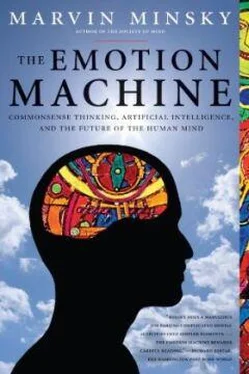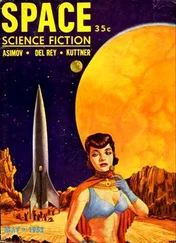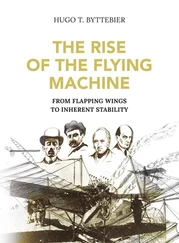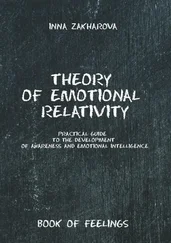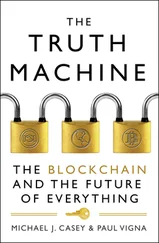Feigenbaum1963: Computers and Thought , Edward. A. Feigenbaum and Julian Feldman (eds.), McGraw-Hill, New York, 1963.
Feynman 1965: Richard Feynman , The Character of Physical Law, MIT Press, Cambridge, MA, 1965. ISBN 0262560038, p168
Fodor 1992: Fodor, J. A., “The big idea: Can there be a science of mind?” Times Literary Supplement . pp. 5-7, July, 1992
Fodor 1998: Jerry Fodor, “The Trouble with Psychological Darwinism,” London Review of Books, Vol. 20 No. 2, 22 January 1998Also at http://www.lrb.co.uk/v20/n02/contents.html
Franklin 1772: Benjamin Franklin, Letter to Joseph Priestly, 19 Sept. 1772 .Text at http://www.historycarper.com/resources/twobf3/letter11.htm.
Freud 1920: Sigmund Freud, A General Introduction to Psychoanalysis, 1920, p259, Liveright 1943 ASIN: B0007HEA6Q.
Friedrick-Cofer 1986: Friedrick-Cofer, L., & Huston, A. C., (1986), Television Violence and Aggression: The Debate Continues, Psychological Bulletin, 100, pp364-371.
Gardner 2000: Howard Gardner, Intelligence Reframed: Multiple Intelligences for the 21st Century, New York: Basic Books, 2000.
Goodall 1968: Jane van Lawick-Goodall, “The behavior of Free-living Chimpanzees in the Gombe Stream Reserve,” Anim. Behav. Monogr. I: 161-311, 1968
Gregory 1998: Richard Gregory, “Brainy Mind, ” Brit. Med. Journal 1998 317:1693. Also at www.richardgregory.org/papers/brainy_mind/brainy-mind.htm.
Gunkel 2006: Patrick Gunkel’s ideas about ideas can be seen at http://ideonomy.mit.edu.
Haase 1986: Kenneth W. Haase, PhD thesis, “Exploration and Invention in Discovery,” MIT 1986, at http://web.media.mit.edu/~haase/thesis.
Haase 1986a: Kenneth W. Haase, “Discovery Systems,” In Advances in Artificial Intelligence , European Conference on Artificial Intelligence, North-Holland, 1986.
Haase 1987: Kenneth W. Haase. Typical: A knowledge representation system for automated discovery and inference , Technical Report 922, MIT Artificial Intelligence Laboratory, 1987.
Haber 1979: R.N. Haber in Behavioral and Brain Sciences , 2, pp583-629, 1979.
Hadamard (1945). Jacques Hadamard. The Psychology of Invention in the Mathematical Field , Dover, 1945, ISBN: 0486201074
Harlow 1958: Harry Harlow, American Psychologist , 13, 573-685, 1958, http://psychclassics.yorku.ca/Harlow/love.htm.
Hayes 1997: PSYCHE Discussion Forum, 29 Sep 1997, The onset of consciousness in speech, ” http://listserv.uh.edu/cgi-bin/wa?A2=ind9709&L=psyche-b&T=0&F=&S=&P=5262
Hinde 1971: Hinde, R. A. & Spencer-Booth, Y. (Towards understanding individual differences in rhesus mother-infant interaction, Animal Behaviour, 19, 165-173.
Hoffman 1994. Howard Hoffman, Amorous Turkeys and Addicted Ducklings , Authors Cooperative, ISBN 0-9623311-7-1, 1994
Horner 1998: John R. Horner and James Gorman, Digging Dinosaurs , Harper and Row, 1998, ISBN 060973145. See Chapter 4.
Hume 1748: David Hume, An Enquiry Concerning Human Understanding .
Hume 1757: David Hume, The Natural History Of Religion. http://www.soci.niu.edu/~phildept/Dye/NaturalHistory.html
James 1890: William James, The Principles of Psychology , Simon & Schuster, 1997, ISBN: 06844842971. Text at http://psychclassics.yorku.ca/James/Principles/preface.htm
James 1902: William James, The Varieties of Religious Experience, Random House 1994, ISBN 067960075–2.
Jamison 1994: Kay Redfield Jamison, “Touched With Fire: Manic-Depressive Illness and the Artistic Temperament," pp 47-48, The Free Press, Simon & Schuster, New York, 1994, ISBN 068483183–X.
Jamison 1995: Kay Redfield Jamison, "Manic-Depressive Illness and Creativity," Sci. Amer., Feb. 1995 V. 272 No. 2 Pp. 62-67
Johnston 1997: Elizabeth Johnston “Infantile Amnesia” at http://pages.slc.edu/~ebj/IM_97/Lecture6/L6.html
Kaiser 2006: Peter Kaiser, The Joy of Visual Perception , at http://www.yorku.ca/eye/toc.htmhas a demonstration at www.yorku.ca/eye/disapear.htm
Kant 1787: Immanuel Kant, Introduction to Critique Of Pure Reason.
Koestler 1964: Arthur Koestler, The Act of Creation, MacMillan 1964.
Korzybski 1933: Alfred Korzybski, Science and Sanity , ISBN 0937298018. Text at http://www.esgs.org/uk/art/sands.htm
Laird 1987: John Laird, Allen Newell, and Paul S. Rosenbloom. Soar: An architecture for general intelligence, Artificial Intelligence , 33(1), 1987. See also http://ai.eecs.umich.edu/soar/sitemaker/docs/misc/GentleIntroduction-2006.pdf
Lakoff 1980: George Lakoff and Mark Johnson, Metaphors We Live By . Chicago: University of Chicago Press, 1980.
Lakoff 1992: George Lakoff, “The Contemporary Theory of Metaphor,” Ortony, Andrew (ed.) Metaphor and Thought (2nd edition), Cambridge University Press, 1993, ISBN 0521405610. Also at http://www.ac.wwu.edu/~market/semiotic/lkof_met.html.
Landauer 1986: Thomas K. Landauer, “How much do people remember?” Cognitive Science, 10, 477-493, 1986.
Langley 1987: Pat Langley, Herbert A. Simon, Gary L. Bradshaw, and Jan M. Zytkow. Scientific Discovery: Computational Explorations of the Creative Processes . MIT Press, 1987.
Lawler 1985: Robert W. Lawler, Computer Experience and Cognitive Development: A Child's Learning in a Computer Culture. John Wiley & Sons, 1985, ISBN 0470201940 .
Lenat 1976: Douglas B. Lenat. AM: An Artificial Intelligence Approach to Discovery in Mathematics as Heuristic Search , PhD thesis, Stanford University, 1976.
Lenat 1983: Douglas B. Lenat and Jon S. Brown. Why AM and Eurisko Appear to Work, Artificial Intelligence , 23, 1983.
Lenat 1983b: Douglas B. Lenat. Eurisko: A program which learns new heuristics and domain concepts, Artificial Intelligence , 21, 1983. Also at http://web.media.mit.edu/~haase/thesis/node52.html
Lenat 1990: Douglas B. Lenat and Mary Shepard. CYC: Representing Encyclopedic Knowledge , Digital Press, 1990.
Lenat 1997: Douglas Lenat, Artificial Intelligence as Common Sense Knowledge,’ http://www.leaderu.com/truth/2truth07.html
Lenat 1998: Douglas B. Lenat, The Dimensions of Context Space , at http://www.cyc.com/doc/context-space.pdf
Lewis 1982: F.M. Lewis, “Experienced personal control and quality of life in late stage cancer patients. Nursing Research, 31(2) 113-119, 1982
Lewis 1995: Michael Lewis, Shame, The Exposed Self, 1991, 1995, The Free Press, Simon & Schuster New York, ISBN 068482311.
Lewis 1995b: Michael Lewis, “Self-conscious Emotions,” American Scientist vol. 83, Jan 1995
Lorenz 1970: Konrad Lorenz, Studies in Animal and Human Behaviour, Vol I, p132, Harvard Univ. Press, 1970, ISBN: 0674846303.
Lovecraft 1926: H.P. Lovecraft, The Call of Cthulhu and other weird stories , S.T. Joshi (ed), Penguin Books, 1999, ISBN 017118234-2
Luria 1968: Alexander R. Luria, The Mind of a Mnemonist : Harvard University Press, 1968. ISBN: 0809280078
McCarthy 1959: John McCarthy “ Programs with Common Sense,” in Proc. Symposium on Mechanization of Thought Processes , Vol 1, pp5-27. D.V. Blake and A.M. Uttley (eds.), Natl. Physical Lab., Teddington, England, HMSO, London, 1959. Also at http://www-formal.stanford.edu/jmc/mcc59.html
McCurdy 1960: Harold G. McCurdy, The Childhood Pattern of Genius. Horizon Magazine, May 1960, pp. 32-38.
McDermott 1992: Drew McDermott. In comp.ai.philosophy, 7 Feb 1992.
Meltzoff 1997: Andrew N. Meltzoff and M. Keith Moore, Explaining Facial Imitation: A Theoretical Model, Early Development and Parenting, Vol. 6, 179-192 (1997). Also at http://ilabs.washington.edu/meltzoff/pdf/97Meltzoff_Moore_FacialImit.pdf
Читать дальше
